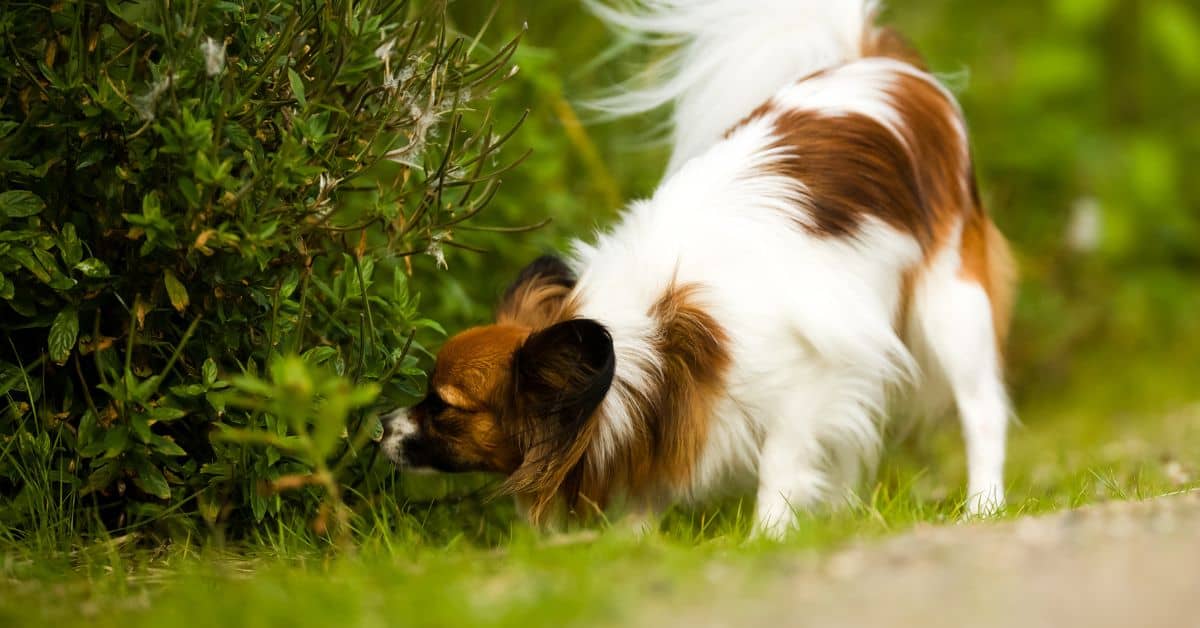If you’ve ever taken a stroll with a canine companion, you’ve probably noticed their seemingly insatiable need to sniff every nook and cranny.
From fire hydrants to random patches of grass, nothing goes unnoticed by their keen noses.
But have you ever wondered why this is the case?
7 Reasons Why Dogs Sniff Everything on Walks delves into the fascinating world of canine olfaction, shedding light on this peculiar but utterly natural behavior.
Join us as we uncover the mysteries behind each sniff and what it reveals about your dog’s perception of the world around them.
Gathering Information
For dogs, sniffing is like reading a daily newspaper.
Every scent, every mark, every lingering aroma tells a story.
Dogs can ascertain the gender, age, diet, and even the mood of other animals they encounter based on scents left behind.
While humans might exchange pleasantries at a gathering, dogs are silently communicating and gathering insights about one another through their sniffing habits.
Recent studies have even shown that dogs can determine the emotional state of other dogs by just sniffing their urine.
Instinctual Behavior
Dogs, by nature, are curious creatures.
This curiosity traces back to their wild ancestors who relied on their noses to track prey, find mates, and avoid predators.
Sniffing everything during walks is a modern manifestation of this age-old instinctual behavior.
Beyond mere curiosity, this behavior helps them construct a mental map of their environment, assisting them in understanding their surroundings and identifying any changes since their last exploration.
Marking Their Territory
Have you ever wondered why your dog seems so keen on urinating at specific spots during your walks?
This isn’t just a bathroom break.
Dogs have scent glands in their paws and around their anal region.
When they leave their scent, they’re marking their territory.
It’s a dog’s way of saying, “I was here.”
This behavior, found in both male and female dogs, establishes a presence and can serve as a way to tell other dogs to keep out or, conversely, invite social interactions.
Mental Stimulation
Just as humans enjoy puzzles, books, and films for mental stimulation, dogs rely on their olfactory explorations.
Their brain is primarily devoted to analyzing smells.
In fact, the part of a dog’s brain that processes scents is, proportionally speaking, 40 times larger than ours.
By allowing them to sniff around, you’re not only catering to their natural instincts but also providing vital mental exercise.
It’s akin to letting them read a book or solve a puzzle, enriching their daily lives in ways that mere physical activity might not.
Tracking Potential Food Sources
Centuries ago, before dogs were domesticated, their survival largely depended on their ability to track and hunt down food.
While today’s household pup might have its meals served in a bowl, their instinct to sniff out potential food sources remains undiminished.
Every rustle in the grass, every concealed scent, could potentially lead to a meal.
As they walk, they’re continuously on the lookout (or rather, the ‘sniff out’) for anything edible.
It’s astonishing to think that a dog’s sense of smell is so refined they can detect a teaspoon of sugar in a million gallons of water.
This unparalleled olfactory ability means that even the faintest scent of a potential food source doesn’t go unnoticed.
So, when your dog suddenly pulls on their leash, nose to the ground, they might just be tracing the remnants of a squirrel’s path or the fading aroma of a discarded food item.
Sensing Danger Or Threats
A dog’s nose is its primary defense mechanism.
Long before they can see or hear a potential threat, they can smell it.
This innate alert system has been honed over millennia.
Whether it’s the pheromones released by a potentially hostile animal or the distinct scent of an unfamiliar human, dogs can quickly detect and assess potential threats in their environment.
It’s why many dog owners report their pets barking or becoming agitated before the doorbell even rings, or a storm is about to start.
Their noses catch the electrical scent in the air or the specific scent of a person approaching.
By understanding these signals and reactions, dog owners can better anticipate and mitigate situations that may stress or threaten their pets.
In essence, when a dog is sniffing intently during a walk, they’re not just exploring; they’re ensuring their safety and that of their human companion.
Bonding With The Environment
Dogs are creatures of habit.
Familiarity brings comfort.
By continuously sniffing and re-sniffing areas, they’re reinforcing the mental map of their environment.
It’s a way of making the vast world feel a bit smaller, a bit more like home.
When a dog revisits and sniffs familiar spots, they’re checking in, ensuring everything is as it should be and noting any changes.
This act of reacquainting and bonding with their environment can also be therapeutic.
Just as humans feel grounded by connecting with nature, dogs feel grounded and secure by reaffirming their connection to their surroundings.
It’s a profound and often overlooked aspect of their walks, providing emotional as well as physical benefits.
The world is a tapestry of scents for our canine companions, with each sniff weaving a story only they can fully comprehend.
From understanding their surroundings to tracking potential food and ensuring safety, each moment a dog spends sniffing enriches its mental and emotional well-being.
As dog owners, recognizing and appreciating this behavior deepens the bond we share with our furry friends.
The next time you take your dog for a walk and they pause to take in the scents remember that they’re not just being inquisitive – they’re reading the world, chapter by chapter, in a language written just for them.
Before You Go…
You now know why your dog sniffs everything on walks.
If you want to learn more, read the following articles too!
Or watch this video:


